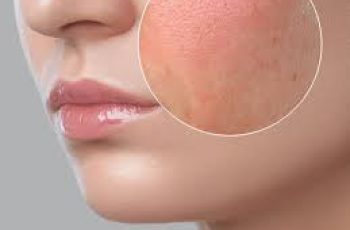What Are Ceramides and How Do They Work in Skincare Products?
In our search for all things anti-ageing, we have turned our attention to the unsung hero of the beauty industry, ceramides. Often overlooked you will find there is often little written about ceramides, so we have collected the answers to your most asked questions about this skin restorative ingredient.
What are ceramides?
Ceramides are lipids, which are fats that occur naturally in the skin, mainly in the outer layer of the skin and helps protect the skin from environmental aggressors, such as pollution. They also work to maintain the health and functionality of the skin’s protective barrier. Ceramides come in high concentrates and makeup 50% of the skin’s composition meaning the way your skin looks and feels relies on them more than you realise.
What do ceramides do?
Ceramides keep skin cells linked together and form a protective blanket layer on the skin, proven to be more powerful than more commonly known ingredients, such as retinol. Ceramides have the ability to help protect the skin against any elements that can cause any signs of ageing and prevent any moisture loss leaving the skin looking youthful and healthy.
Though the body naturally produces ceramides you can also use products made from synthetic ceramides to give the skin a production boost. You can also add more foods to your diet that are high in fatty acids, such as avocados.
What are the benefits of ceramides?
With ceramides naturally occurring in your body, you may wonder if there is much point in using products containing any ceramides. It is actually hugely benefitcal to add them to your skincare routine. Environmental aggressors, such as exposure to UV rays, have a huge effect on the skin’s natural ceramides meaning they become depleted and the skin’s barrier become damages. When this happens you will find your skin will feel tight, irritation and redness with wrinkles and fine lines becoming more noticeable.
Main Benefits of ceramides
Ceramides reduce the signs of ageing
Ceramides reduce the appearance of fine lines and wrinkles
Ceramides locks in moisture stopping the skin from drying out
Ceramides help dehydrated skin
The benefits of ceramides are not limited to any particular skin type, let us now explain the impact ceramides have on the various skin types.
Which skin types benefit from ceramides?
All the skin types are able to use products containing ceramides as they are in the body already, you will find that blemish-prone and sensitive skin benefit from using products containing ceramides as they are skin-replenishing and do not clash or cause any imbalance to the daily function of the skin.
For those who suffer with eczema and psoriasis, you may notice any topical products formulated to treat your conditions usually contain ceramides due to the super hydrating, moisture locking abilities of this powerhouse ingredient.
What’s the difference between natural and synthetic ceramides?
The natural ceramides are found in the skin, and can be introduced through diet by consuming food high in healthy fatty acids;
Sweet potatoes
Soy
Corn
Avocados
Wheat
Rice
The synthetic ceramides that are formulated in skincare products are reproduced in labs etc but do not falter on how effective they are for treating the skin. They are still able to replenish the skin of ceramides and their huge amount of benefits.
What to look for when finding products containing ceramides?
You will find a majority of the time that if a product contains ceramides that the packaging features a mention of it on the labels and in the ingredients list, look out for, ceramides, AP, EOP, NG, NP or NS, which are typically the names used. It is worth looking out for phytosphingosine and sphingosine as these ingredients are known as ceramide precursors, meaning they work at giving a boost in natural ceramide production in the skin.
Top Tip: always ensure you opt for products that have been properly packaged. By this I mean a product that is opaque and air-tight container as a majority of anti-ageing ingredients are unstable and lose their effectiveness with too much exposure to air and UV rays.
Can I use ceramides with other ingredients?
Ceramides give the best results when combined with other skin-replenishing ingredients, particularly ones that contain fatty acids in them like glycerine. Antioxidants, such as niacinamide are also a great skincare partner to use with ceramides. With this cocktail of ingredients, you will find that the skin’s tone, texture and signs of ageing are treated effectively.
The three main ingredients you will see the most results are;
Retinols
Antioxidants
Peptides
Other compounds that treat the skin, such as AHAs and BHAs also work great with ceramide and you can expect to see impressive results due to the fact that the chemical exfoliation to the skin allows the ceramide-enriched product to absorb into the skin and show results quicker. Some have said there is a similarity to hyaluronic acid and ceramide which is understandable as they are quite alike in regards to how they react and treat the skin. The main difference is ceramides are not as frequently spoken about and are lesser known throughout the market.
Check out our blog for a dedicated on chemical exfoliation to find out more about how it works and perfects the skin.
Is it better to use ceramide skincare or food supplements?
For some, it doesn’t really matter how you add ceramides to your routine, just so long as they are added. Those with hypersensitive skin and who suffer from other underlining skin conditions may find it easier to have food supplements and treat the concern from the inside out. For those with very dry and ageing skin applying a topical ceramide-enriched cream or lotion would be the better option.
How to use ceramide products in your skincare routine.
You may be pleased to hear that ceramide is available in a large variety of products;
Cleansers
Moisturisers
Serums
Face washes
Face masks
For a ceramide formulated cleanser it is best to use it twice and day to reap the hydrating benefits. Be sure to apply any moisturisers right after having a shower whilst your skin is slightly damp, allowing the product to lock in even more moisture. Be sure to apply a daily SPF of 30 and above to keep the skin protected from any UV damage. For the evening it should be the last step to your routine to allow time for the product to absorb into the skin and work wonders whilst you sleep.
Are there any side effects?
Ceramides are generally safe to use on all skin types, however, much like all skincare products performing a patch test is advised to ensure you don’t suffer with any reactions or irritation.
To do this:
Apply some product onto your forearm the size of 10p
Wait to see if you experience any redness, itching or other irritation
If any irritation occurs wash the area immediately and don’t continue using the product
If you don’t have any reactions straight away, leave for it 24 hours and if you don’t experience any irritation the product is safe to used elsewhere
When should I expect to see results?
You can see results almost immediately after applying ceramide moisturiser, the skin will feel comfortable, supple and look happy and hydrated. As for the anti-ageing benefits, this may take a little longer due to your skin’s natural skin cell cycle and the type of skin you have. In general, it is said that about six months is a good amount of time passed to see the results in the reduction of fine lines and wrinkles.
As you are well aware now, ceramides are naturally present in the body and you wouldn’t be blamed for leaving it up to your skin to maintain its production.
If you are wanting to give your skin an extra nudge in ceramide production by introducing products containing ceramide to your routine you will see a great number of benefits and be left with well balanced, moisturised, younger-looking skin. You’ll be kicking yourself that you didn’t know about this hard-working ingredient sooner!


